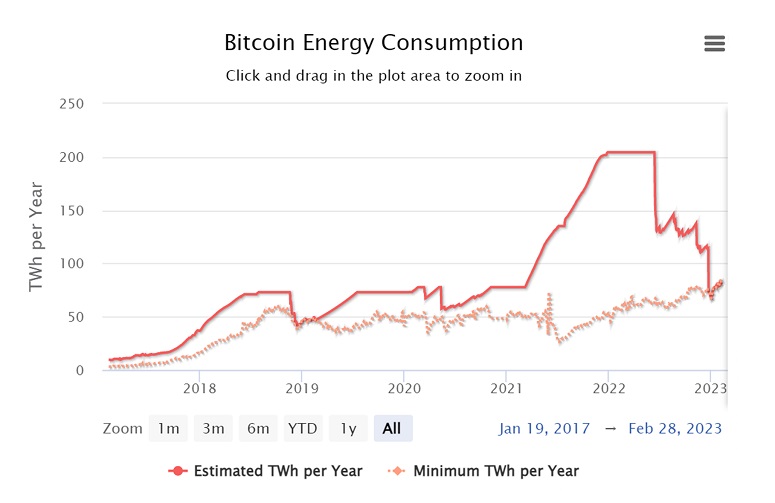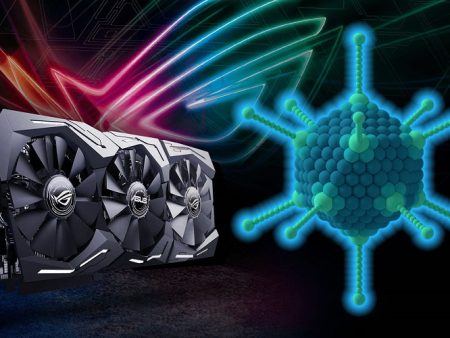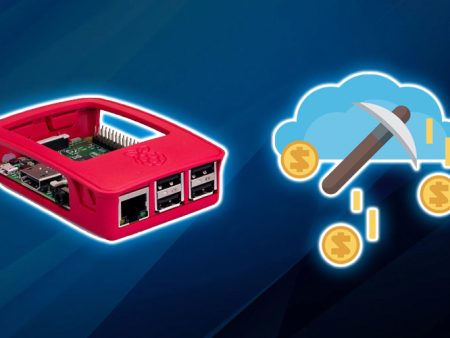Computing hardware owners compete to find a cryptographic solution. The found result becomes the target hash that closes the Bitcoin block. For this, the miner receives a payout of 6.25 BTC. At a coin value of $22.8 thousand, the reward is $142.5 thousand. In the article we will tell you how much electricity is needed to mine one Bitcoin. Readers will receive instructions for calculating the costs.
Equipment for bitcoin mining
For mining digital currencies, farms on graphic graphics cards (GPU), central processing units and ASIC-miners are used. The choice of devices is related to hashing algorithms. Most altcoins can be mined using GPUs. Performance depends on the power of the video card. As a rule, 4, 6, 8, or 12 GPUs are installed in regs. The total hash rate can reach 2.5 GH/s (for 12 NVIDIA GeForce RTX 4090 cards when running on the NexaPow algorithm). Despite the high value, this performance is not enough to find a hash in the Bitcoin blockchain.
To mine BTC, you need more productive ASIC hardware. One of the popular models is Bitmain Antminer S17 Pro. Factory specifications show a hash rate of 50, 53 or 56 TH/s in operation on the SHA-256 algorithm.
Relationship between mining and electricity costs
When choosing equipment, you need to consider energy costs. Usually, the rule of thumb is: higher hash rate – higher electricity consumption. However, outdated models spend more resource to maintain high performance. The decrease of this ratio is due to the development of more efficient architecture and constant evolution of chips.
The equipment performs calculations 24 hours a day. One Antminer S17 Pro 53 TH/s consumes 1775 kW per month for the amount of 9.76 thousand rubles. A farm of several asics requires much more energy.
5020 $
bonus za nove uporabnike!
ByBit zagotavlja priročne in varne pogoje za trgovanje s kriptovalutami, ponuja nizke provizije, visoko stopnjo likvidnosti in sodobna orodja za analizo trga. Podpira promptno trgovanje in trgovanje s finančnim vzvodom, začetnikom in profesionalnim trgovcem pa pomaga z intuitivnim vmesnikom in učnimi navodili.
Zaslužite bonus 100 $
za nove uporabnike!
Največja borza kriptovalut, kjer lahko hitro in varno začnete svojo pot v svet kriptovalut. Platforma ponuja na stotine priljubljenih sredstev, nizke provizije ter napredna orodja za trgovanje in investiranje. Zaradi preproste registracije, visoke hitrosti transakcij in zanesljive zaščite sredstev je Binance odlična izbira za trgovce na vseh ravneh!
Industrial mining centers in Kazakhstan contain from 50 thousand ASIC-devices. Monthly electricity costs exceed $1 million. At the same time, the volume of mining is 750 BTC per month worth $17 million at the current exchange rate.
How to calculate how much electricity is needed to mine one bitcoin
When calculating the amount of energy consumption, it is necessary to take into account the complexity of the network. According to the Digiconomist service, the consumption index for creating a Bitcoin block is 313.36 MW at the beginning of February 2023. The cost per year is 80.5 TW. At the end of 2022, the index was 2.5 times higher – 201 TW.

Given the high electricity costs, for mining 1 bitcoin, you need to look for regions with low tariffs for the location of data centers. For example, in Russia, the average price per kW is 5.5 rubles, but in the Irkutsk region it is 1.1 rubles. In this regard, large mining centers for BTC mining are located there.
Electricity consumption for mining
To calculate the productivity and energy consumption of equipment, it is convenient to use online calculators. One of the popular services is WhatToMine. The instructions are as follows:
- Open the GPU or ASIC section.
- Specify the model of the card or asic.
- Select the hashing algorithm.
- Enter the cost of electricity in the Cost field.
The service will automatically calculate the potential production and costs, and show the final yield. Some programs can also take into account the value of commissions of the miner-client and pool for joint hash mining.
Time to mine 1 bitcoin
The hashing algorithm adjusts the computational complexity of the network depending on the overall performance. If the number of devices increases, the figure goes up. In case the total hash rate of the equipment in the network drops, the complexity becomes lower. This factor is used to average the time it takes to create a single block. In the Bitcoin network, searching for a target hash takes an average of 10 minutes. This does not mean that blocks are created every 10 minutes. The process can take as little as 6 minutes or as long as 20 minutes. However, over the long haul, the network evens out to an average.
Avtor: Saifedean Ammous, strokovnjak za ekonomijo kriptovalut.















